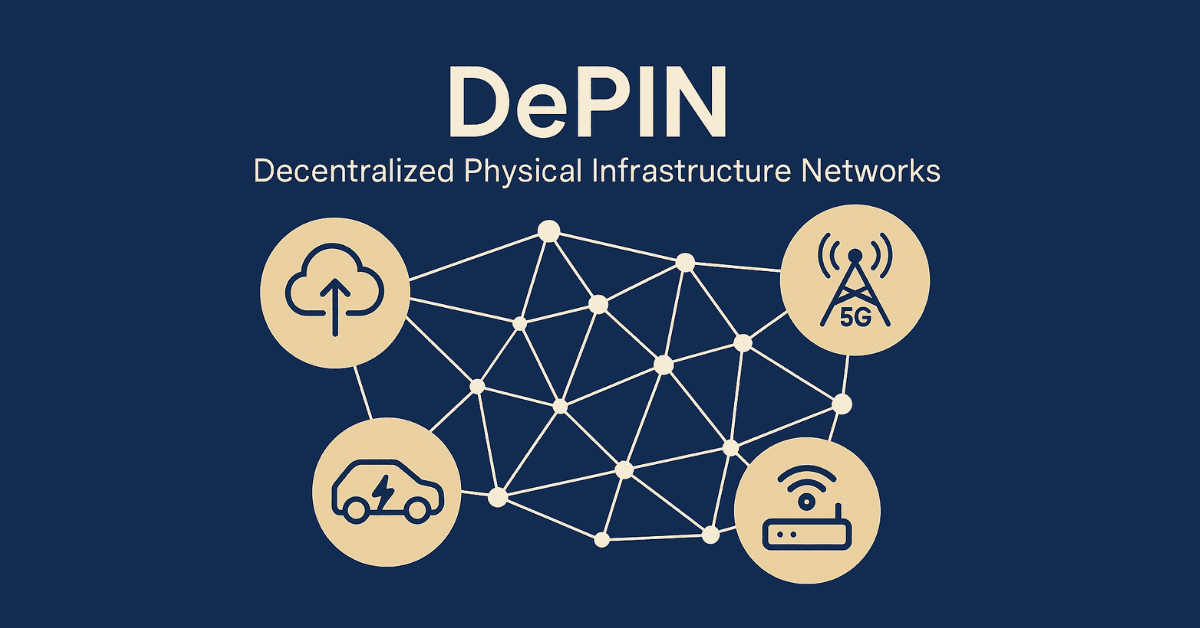
The Future Of DePIN In The Web3 Era
1. What is DePIN?
DePIN stands for Decentralized Physical Infrastructure Network. It uses blockchain to manage real-world infrastructure in a decentralized way. Instead of being controlled by a single entity, anyone can contribute resources like bandwidth, data storage, hotspots, or vehicles and earn tokens as rewards.
2. Types of DePIN
DePIN networks are divided into two main categories:
-
Physical Resource Networks (PRN): Include physical devices such as Wi-Fi hotspots, 5G stations, sensors, or electric charging stations.
-
Digital Resource Networks (DRN): Provide digital services like data storage, bandwidth, and VPN access.
3. Why DePIN is Gaining Attention
-
Decentralization: Reduces reliance on intermediaries and increases transparency.
-
Token incentives: Users are rewarded for sharing their resources.
-
Economic efficiency: Lowers the cost of infrastructure deployment.
-
Scalability: Taps into global user participation instead of centralized funding.
4. Pros and Cons of DePIN
Advantages:
-
Transparent and decentralized control
-
Token incentives encourage user participation
-
Scalable through community contributions
-
Fosters innovation in infrastructure
Challenges:
-
Long-term incentive models may be difficult to sustain
-
Technical complexity limits access
-
Legal uncertainties in different jurisdictions
-
Competes with efficient traditional infrastructure systems
5. Notable DePIN projects
-
Helium (HNT): Provides decentralized wireless networks for IoT devices, rewarding users with tokens.
-
Filecoin (FIL): Enables users to rent out storage space in a decentralized market.
-
Render Network (RNDR): Connects creators needing GPU rendering power with providers.
-
IoTeX (IOTX): Focuses on secure and private IoT infrastructure.
6. The future of DePIN
DePIN has the potential to power billions of IoT devices and form the backbone of a new global infrastructure system. Integration with AI, better user interfaces, and technological standardization are expected to drive the model forward in the coming years.